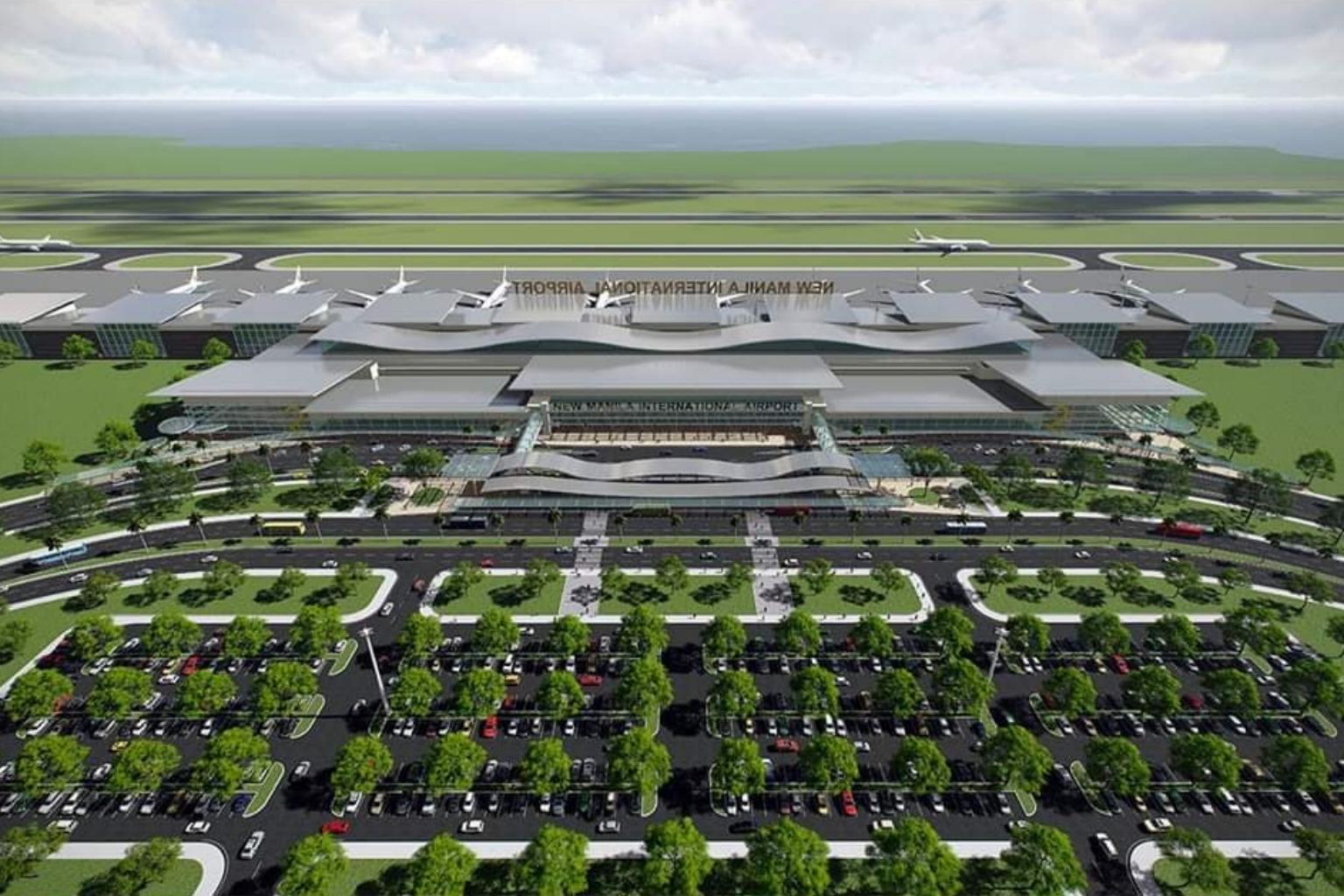Build that new airport: Inquirer
In its editorial, the paper outlines how building the New Manila International Airport will benefit the Philippines.
Sign up now: Get insights on Asia's fast-moving developments

The proposed airport will have four parallel runways, eight taxiways, hundreds of air bridges and several passenger terminal buildings.
PHOTO: NEW MANILA INTERNATIONAL AIRPORT - BULACAN/FACEBOOK
Follow topic:
MANILA (PHILIPPINE DAILY INQUIRER/ASIA NEWS NETWORK) - There is no doubt about the power of infrastructure spending to boost the economy of a country.
Time and again, it has been proven that spending substantial sums of money on building big-ticket projects like airports, seaports, highways and mass transportation systems will result in greater economic activity that will, in turn, create more jobs and lift more people out of poverty.
The current environment under the Duterte administration is proof of this, with the Philippine economy continuing to grow at a good clip despite the uncertainties of global trade that has affected business confidence in other countries.
Yet, there is also no doubt that the administration's "Build, build, build" infrastructure drive can still stand improvement.
Specifically, the President's flagship economic program - with an estimated P9 trillion (S$236 billion) projected to be spent to improve the Philippines' outdated infrastructure - will be even more effective in achieving its stated goals if its gears and cogs turn faster, from the approval process for getting one particular mega project off the drawing board and into the actual construction phase.
Case in point: the New Manila International Airport that San Miguel Corp. wants to build on a sprawling 2,500-hectare tract of land in Bulacan, just a few minutes north of Metro Manila.
The proposed airport will have four parallel runways (double that of even the most ambitious rival proposals currently being considered by government), eight taxiways, hundreds of air bridges and several passenger terminal buildings that will make the current nightmarish congestion horror stories at Ninoy Aquino International Airport (Naia) and other gateways in the country a thing of the past.
Other benefits are less obvious, but no less important.
The project is expected to create one million new jobs, both directly and indirectly.
That's because building the mega project will involve hiring thousands of construction workers from the surrounding provinces, and thousands of architects, engineers and technical staff.
All these people will have to be fed, housed and clothed.
And they will be paid wages that they will spend for themselves and their families - spending that will go some way toward further boosting the country's gross domestic product.
San Miguel contends that even the local environment stands to benefit, as it plans to build a spillway that will channel all the excess water from the Pampanga River and nearby watershed areas straight into Manila Bay, bypassing Bulacan's plains and solving the province's annual flooding problem.
Land values are also expected to increase - a phenomenon that will boost the net worth of Filipinos residing in northern Metro Manila and the nearby provinces of Central Luzon.
At present, the biggest infrastructure deal on the government's plate is the US$7 billion Metro Manila Subway project, which is expected to bring massive direct and indirect benefits to the national and local economies.
The Bulacan airport, however, is worth more than twice that amount.
The best part of the deal, it appears at this time, is that the government won't have to spend a single peso of its projected US$15 billion (S$20.47 billion) cost.
Zero government guarantees, too.
San Miguel - the country's largest conglomerate - has committed to finance the mammoth undertaking by itself, through a combination of its own financial muscle and the confidence of its creditors, both here and overseas.
So what's the status of the project at the moment?
Previous disagreements between the government and the proponent over the terms of reference have apparently been resolved, and the Swiss challenge is underway, whereby other parties are invited to submit a counteroffer to see if they can better San Miguel's terms.
The process will be concluded later this month.
Almost a year ago, thousands upon thousands of travellers to and from Metro Manila, around the country and around the world had to endure long hours of flight delays or outright cancellations after a Chinese airliner's mishap caused the closure of Naia's main runway for almost two days.
Such incidents only highlight the sorry state of the country's infrastructure, and why progress toward the creation of a new international aviation gateway such as the Bulacan airport, which has gone through a long, drawn-out process that began nearly seven years ago, needs to proceed at a faster, more urgent pace.
The Duterte administration's vaunted political brawn should help push this along by brooking no further undue delays.
The Philippine Daily Inquirer is a member of The Straits Times media partner Asia News Network, an alliance of 24 news media organisations.

